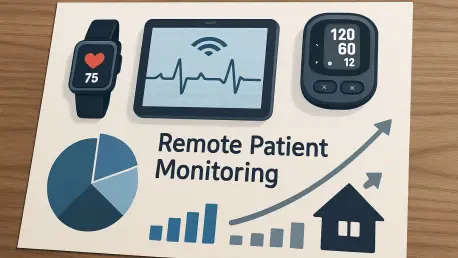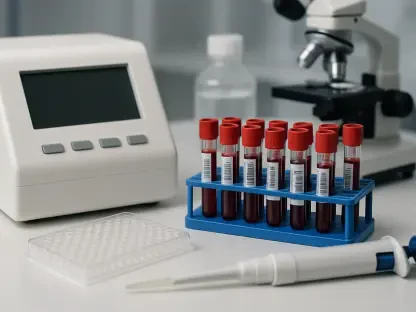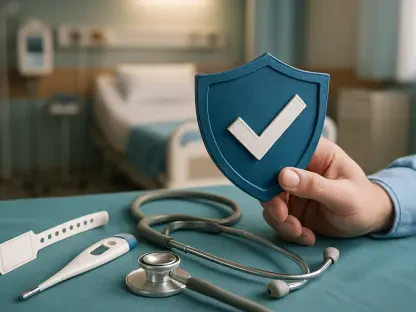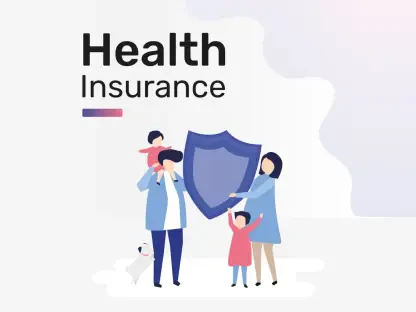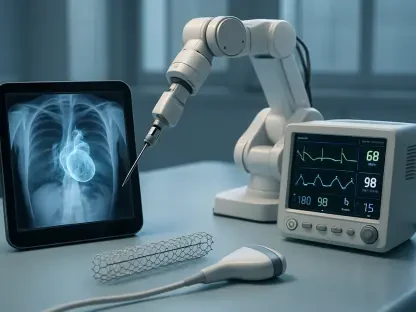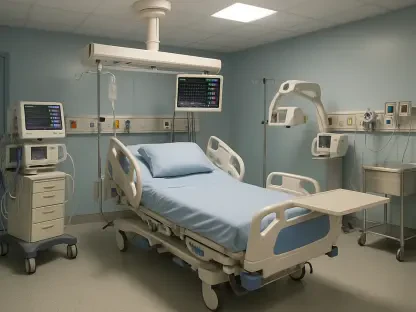In an era where healthcare systems are grappling with escalating costs and an aging population burdened by chronic illnesses, Remote Patient Monitoring (RPM) emerges as a game-changing solution that redefines how care is delivered beyond hospital walls. This innovative technology harnesses wearable sensors, Bluetooth-enabled devices, and real-time data analytics to track patients’ vital signs continuously, enabling clinicians to intervene early, manage long-term conditions, and curb unnecessary hospital visits. Far from being a passing fad, RPM is rapidly becoming a fundamental pillar of modern medical practice, promising not only to enhance patient outcomes but also to alleviate the financial strain on overburdened healthcare infrastructures. As the demand for preventive and personalized care surges, the global market for RPM is on a remarkable trajectory, with projections estimating a leap from $22.03 billion in 2024 to a staggering $110.71 billion by 2033, reflecting a robust compound annual growth rate of 19.8%. This seismic shift underscores a broader movement toward technology-driven, patient-centered healthcare that prioritizes accessibility and efficiency.
Market Expansion and Key Drivers
The meteoric rise of the RPM market is deeply rooted in pressing healthcare challenges, particularly the growing prevalence of chronic diseases that are expected to impact nearly half of U.S. adults in the coming years. This alarming trend, coupled with the staggering costs of hospital readmissions—running into billions annually—has catalyzed a desperate need for preventive strategies. RPM addresses this by enabling real-time health monitoring, allowing providers to detect issues before they escalate into emergencies. North America currently holds a commanding 40-45% of the global revenue share, driven by advanced infrastructure and supportive policies, while the Asia-Pacific region is witnessing the fastest growth, propelled by mobile-first health innovations and an expanding patient base hungry for scalable solutions. This dynamic landscape illustrates how RPM is not merely a technological advancement but a critical response to systemic healthcare burdens, paving the way for sustainable, cost-effective care models.
Beyond the numbers, the growth of RPM is fueled by a fundamental shift in healthcare philosophy—from reactive interventions to proactive management. The financial and human toll of chronic conditions like diabetes and heart disease has pushed stakeholders to embrace tools that can mitigate risks early. Governments and private sectors alike are investing heavily in RPM, recognizing its potential to reduce the strain on hospitals and improve resource allocation. The technology’s ability to deliver data directly from patients’ homes to clinicians’ dashboards means fewer unnecessary visits and a sharper focus on those who need urgent care. Moreover, as populations in developing regions gain access to mobile technology, the scalability of RPM becomes even more pronounced, promising to bridge gaps in care delivery across diverse geographies. This momentum signals a future where RPM could redefine global health standards, provided the infrastructure and policies continue to evolve in tandem with market demands.
Widespread Adoption in Healthcare Systems
Once considered a niche experiment, RPM has now firmly embedded itself into the fabric of healthcare delivery, with adoption rates soaring over recent years. Medicare billing codes for RPM services have seen an astonishing 3,000% increase since their early days, reflecting a seismic shift toward mainstream integration across hospitals, outpatient clinics, and home-health agencies. Conditions such as hypertension, diabetes, and heart failure are now routinely managed through RPM, enabling providers to keep a close watch on vulnerable patients without the need for constant in-person visits. However, the success of these programs often depends on meticulous patient selection and thoughtful design to ensure that the technology addresses specific needs effectively, avoiding a one-size-fits-all approach that could dilute its impact.
This rapid integration is not without its nuances, as healthcare providers navigate the complexities of embedding RPM into existing systems. The transition from pilot programs to standard practice has required significant adjustments in training staff and educating patients on how to use monitoring devices. Hospitals and clinics have had to rethink workflows to accommodate the influx of data, ensuring that it translates into actionable insights rather than overwhelming teams. Additionally, the diverse settings in which RPM is deployed—from urban medical centers to rural home care—highlight the need for customizable solutions that account for varying levels of technological literacy and access. As adoption continues to expand, the focus remains on refining these programs to maximize their reach and efficacy, ensuring that the benefits of remote monitoring are realized across the broadest possible spectrum of patients and providers.
Clinical Impact and Patient Benefits
The true value of RPM shines through in its measurable impact on patient health, with clinical outcomes providing compelling evidence of its transformative potential. Take the UMass Memorial Health initiative for heart failure patients as a prime example: this program achieved a dramatic reduction in 30-day readmission rates, dropping from 18% to 9%, while also shortening average hospital stays from 5.6 to 4.1 days. Such results demonstrate how continuous monitoring can catch deteriorating conditions early, allowing for timely interventions that prevent costly and distressing hospital returns. These improvements not only enhance the quality of life for patients but also alleviate pressure on healthcare facilities, showcasing RPM as a vital tool in modern medical practice.
Equally impressive are the results seen in hypertension management, where RPM has proven to be a catalyst for better control rates. Programs combining remote monitoring with pharmacist interventions have reported up to 74% of patients achieving stable blood pressure within a year—a stark improvement over traditional methods. This success stems from RPM’s ability to foster adherence through regular feedback and personalized care plans, ensuring patients remain engaged in their treatment. The ripple effects extend beyond individual health, as fewer emergency visits and hospitalizations translate into substantial cost savings for healthcare systems. While not every study shows uniform results, the growing body of evidence points to RPM’s capacity to revolutionize chronic disease management, provided it is paired with robust support structures that prioritize patient engagement and clinician responsiveness.
Economic Factors and Reimbursement Policies
A significant driver behind RPM’s rapid growth lies in the evolving economic landscape, particularly the introduction of reimbursement policies that make it a financially viable option for providers. The Centers for Medicare & Medicaid Services (CMS) has paved the way by offering $38–$48 per patient per month for monitoring services, a move that has shifted RPM from an experimental cost to a sustainable revenue stream. Over 40 state Medicaid plans and numerous private insurers have followed suit, broadening the financial incentives for healthcare organizations to adopt this technology. This policy shift reflects a growing recognition of RPM’s role in reducing long-term costs associated with chronic care and hospital readmissions, positioning it as a cornerstone of value-based healthcare models.
However, economic challenges persist, particularly for smaller practices that struggle with the initial investment required for RPM implementation. The costs of acquiring monitoring equipment, training staff, and integrating systems with electronic health records can be prohibitive, creating a barrier to entry for those with limited resources. While larger health systems can absorb these upfront expenses, rural and independent providers often find themselves at a disadvantage, risking a widening gap in care delivery. Addressing this disparity will require innovative funding mechanisms and partnerships to ensure that the economic benefits of RPM are accessible to all corners of the healthcare ecosystem. As reimbursement frameworks continue to evolve, the focus must remain on balancing affordability with the undeniable long-term savings that RPM offers through reduced hospitalizations and improved patient outcomes.
Technological Advancements Propelling RPM
The future of RPM is being shaped by groundbreaking technological innovations that push it beyond basic monitoring toward predictive and preventive care. Artificial intelligence (AI) and Internet of Things (IoT) integration are at the forefront, enabling systems to analyze vast amounts of data and identify health declines before symptoms even manifest. The AI-assisted RPM market is projected to surpass $8 billion by 2030, a testament to its potential to transform how clinicians anticipate and respond to patient needs. Alongside this, advancements in cloud security and electronic health record interoperability ensure that data flows seamlessly and securely, enhancing clinical response times and overall system efficiency in a rapidly digitizing healthcare environment.
Yet, technology alone cannot carry RPM to its full potential, as clinicians consistently emphasize the importance of human oversight. While AI can flag anomalies and predict risks, it is the judgment of healthcare professionals and the education provided to patients that turn these insights into meaningful outcomes. Over-reliance on automated systems risks depersonalizing care, a concern that underscores the need for a balanced approach where tech serves as a tool rather than a replacement for the human touch. As innovations continue to emerge, the challenge lies in ensuring they complement existing care models, focusing on user-friendly designs that empower both patients and providers. This synergy between cutting-edge tools and compassionate care will determine how effectively RPM can scale to meet global health demands.
Workflow Integration and the Human Element
At its core, RPM’s effectiveness hinges not just on technology but on the people who operationalize it, making workflow integration a critical piece of the puzzle. Successful programs rely on dedicated staff who monitor incoming data, interpret alerts, and communicate directly with patients to ensure timely interventions. This human element transforms raw metrics into actionable care, positioning RPM as an extension of traditional nursing rather than a standalone solution. Without this personal touch, the flood of information generated by remote devices could easily overwhelm providers, rendering the technology less effective and potentially counterproductive in busy clinical settings.
Moreover, integrating RPM into daily workflows requires careful planning to avoid disrupting established practices or burdening healthcare teams. Alert fatigue—a common issue where providers are inundated with notifications—poses a real risk to responsiveness, as does the challenge of training staff to use new systems efficiently. Addressing these concerns involves designing intuitive platforms that prioritize critical alerts and streamline communication between patients and care teams. The goal is to enhance, not hinder, the clinician-patient relationship, ensuring that technology supports a seamless continuum of care. As RPM becomes more ingrained in healthcare, striking this balance will be essential to sustaining its benefits and maintaining trust in the system.
Barriers Hindering Broader Adoption
Despite its undeniable promise, RPM faces significant obstacles that could impede its path to universal acceptance across healthcare systems. Workflow overload stands out as a primary concern, with providers often struggling to manage the deluge of data and alerts generated by remote devices, leading to potential burnout and reduced effectiveness. Additionally, reimbursement delays disproportionately affect rural providers, who may lack the financial cushion to sustain programs while awaiting payments. These operational and economic hurdles highlight the need for streamlined processes and targeted support to ensure that RPM’s benefits are not limited to well-resourced institutions but extend to all corners of the healthcare landscape.
Another pressing barrier is the digital divide, which excludes vulnerable populations such as older adults and low-income individuals from accessing RPM technologies. Limited internet access, lack of compatible devices, and varying levels of tech literacy create disparities that threaten to undermine the equitable potential of remote monitoring. Tackling this issue demands innovative solutions, from subsidized equipment programs to community-based training initiatives that bridge the gap. Furthermore, inconsistent evidence across studies—due to varied program designs—complicates efforts to build a universal case for RPM’s efficacy. Overcoming these challenges will require smarter software, standardized outcome metrics, and a commitment to inclusivity to ensure that the technology reaches those who need it most.
Vision for RPM as a Healthcare Standard
Looking toward the horizon, RPM is on track to become an integral component of healthcare delivery by 2030, with projections suggesting that 70-80% of large health systems will adopt continuous monitoring for chronic conditions. This shift represents a profound reimagining of care, where the focus moves from crisis response to sustained prevention, ultimately reducing costs and improving patient outcomes. The ability of RPM to extend the reach of healthcare teams—connecting patients in remote areas with specialists through digital platforms—positions it as a vital tool for addressing global health disparities, provided the emphasis remains on actionable data and accessible implementation.
Achieving this vision will not come without deliberate effort, as stakeholders must prioritize fair access and robust program design to ensure RPM’s scalability. Lessons from early adopters indicate that success lies in tailoring solutions to specific patient populations, integrating technology seamlessly into care routines, and maintaining a strong human connection amidst digital advancements. As healthcare systems worldwide grapple with rising demands, RPM offers a blueprint for a future where hospital overcrowding is mitigated, and clinicians can focus on preemptive strategies rather than emergencies. This trajectory, while ambitious, reflects a growing consensus that continuous monitoring is not just an option but a necessity for the evolution of patient-centered care.
